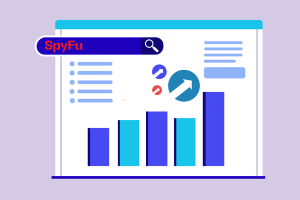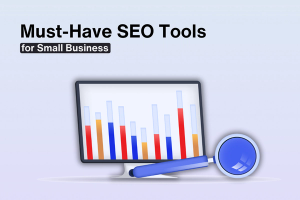Serpstat Review 2025: An All-in-One SEO Toolbox
Editorial Note: We earn a commission from partner links. Commissions do not affect our editors' opinions or evaluations.
Updated December 14, 2024
Published June 17, 2023

Serpstat is one of the SEO tools that have made search engine optimization (SEO), once a complex field for experts, accessible to all.
This Serpstat review explores its pros, cons, and features, and compares it to competitors, guiding you to decide if it’s the right tool for you.
So let’s dive in!
What is Serpstat?
Serpstat was launched in 2013 as a keyword research tool. However, the platform has added more SEO capabilities, including site auditing, backlink analysis, rank tracking, and more. Since 2016, Serpstat has marketed itself as an all-in-one SEO platform. The software joins the rank of established “growth hacking” tools such as Semrush, Ahrefs, and Moz Pro.
The software takes a holistic approach to SEO, with numerous features to help you track, analyze, and optimize multiple SEO aspects to help you rank higher in the search engine results pages (SERPs). So whether you want to boost your organic search ranking, increase your online visibility, understand what your competitors are doing, or improve the overall website performance, Serpstat can help you do it.
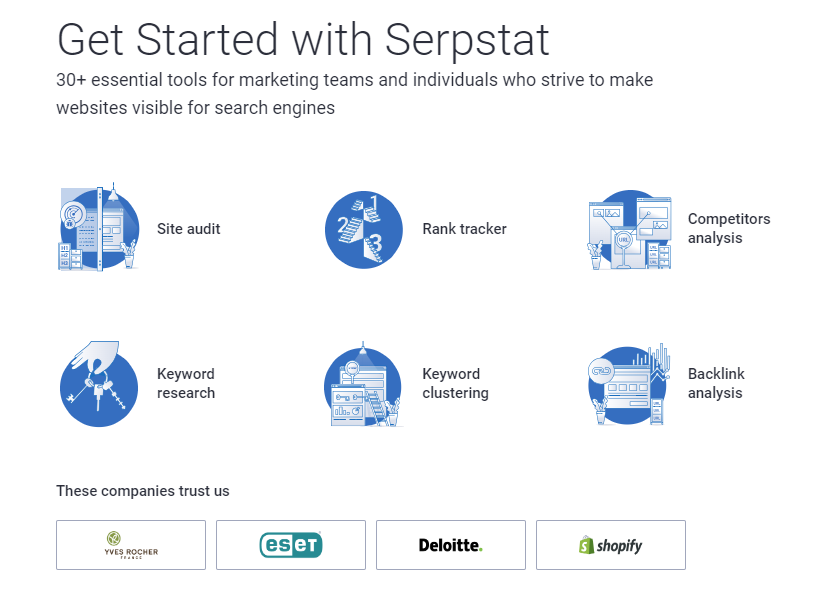
Serpstat has over 250,000 users globally, including notable brands like Uber, Shopify, Philips, Deloitte, and Samsung. But does Serpstat live up to its claims about being the ultimate SEO suite? Before peeking under the hood to explore its features, we’ll first explore what makes Serpstat great and where it falls short.
Serpstat: The Good and the Bad
While Serpstat has gained significant momentum, the SEO software market is saturated and digital marketers are spoiled for choice. With this in mind, it is essential to consider where Serpstat stands out from the crowd and where the software might be improved. This way, you can decide whether Serpstat aligns with your specific optimization needs and goals.
What Makes Serpstat Stand Out
1. All-in-One SEO Platform: Serpstat offers a comprehensive SEO toolset. You don’t need to switch between tools to manage competitor analysis, keyword research, etc. Serpstat offers everything you need for your SEO strategy conveniently in one dashboard.
2. In-Depth Keyword Research: Serpstat has one of the more expansive keyword databases with over 6 billion indexed keywords. We’ve dedicated an entire section explaining Serpstat’s superior keyword research capabilities. But you can expect keyword suggestions, search volume and difficulty metrics, competitor keyword analysis, advanced filtering and sorting, and more.
3. User-Friendly Interface: The software maintains a clean and intuitive interface despite its numerous features and functionality. People who’ve used similar tools like Ahrefs or Semrush will find that Serpstat’s interface is familiar and easy to master. The tool’s features are listed on the left-hand side of the screen, so you know exactly where to find what you need.
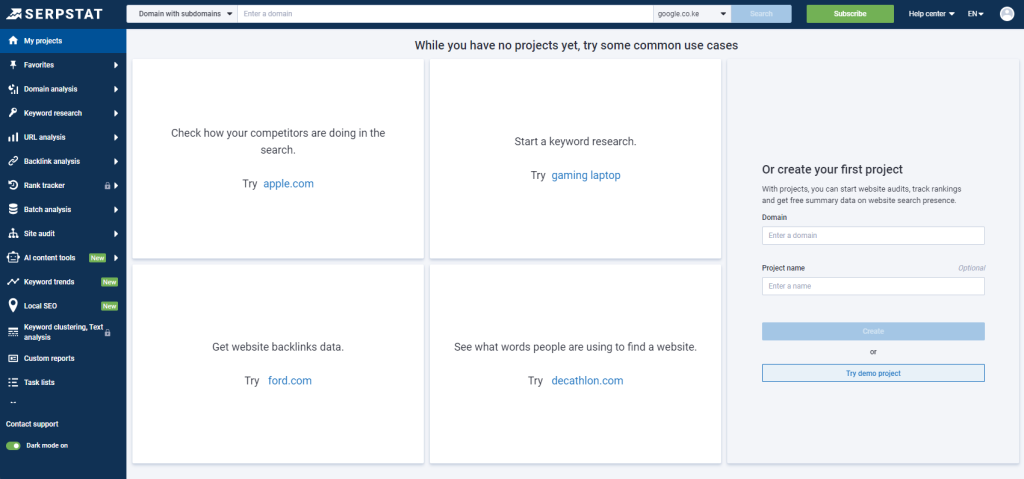
4. Excellent Support: Serpstat provides prompt and responsive support with all its paid plans. The platform offers multiple support channels, including live chat, email, and support tickets.
5. Excellent Value for Money: Serpstat offers terrific value for money any way you look at it. For example, the software is significantly cheaper than most competitors, especially considering its robust feature set. Furthermore, Serpstat replaces most supplemental SEO tools, so you only pay for one service instead of multiple software used for different functions.
Where Serpstat Falls Short
1. Slight Learning Curve for Newbies: People with technical SEO knowledge won’t have a problem navigating Serpstat. However, beginners might find the numerous features and data overwhelming. While many people may appreciate more features for the money, others might prefer the opposite, with just the features and data they can use effectively.
2. Limited Local SEO Capabilities: Serpstat is a terrific tool for global SEO analysis. However, businesses targeting primarily local optimization may require a different or supplemental tool. Unfortunately, Serpstat’s local SEO capabilities don’t match up to its global analysis. This problem isn’t unique to Serpstat and is a common limitation across most tools of its caliber.
3. Hit-or-Miss Keyword Difficulty Metrics: There are numerous complaints about the accuracy of Serpstat’s keyword difficulty metrics. It might be worth using a dedicated tool to validate keyword difficulty or perform manual research. On the upside, Serpstat is constantly improving its platform, so we expect this won’t be an issue for much longer.
Start your 7-day free trial with Serpstat now.
Serpstat Review: Features and Functionality
The following section is the ‘meat’ of this review. It delves deep into what Serpstat has to offer regarding features and functionality. But first, we need to ask what a complete SEO toolkit should do. The answer is simple; an SEO toolkit should allow you to conduct:
- Keyword Research
- Site Audits
- Backlink Analysis
- Rank Tracking
At face value, Serpstat supports these functions. Now, the only question is how well Serpstat performs in each of these areas we’ve identified. Read on to find out!
Serpstat Review: Keyword Research
Serpstat started as a keyword research tool, so it makes sense to start here. True to its origins, the software offers some of the most comprehensive keyword research capabilities on the market. The platform provides at least eight critical metrics, including:
- Search Volume
- Competition Level
- Keyword Difficulty
- Related Keywords
- Cost Per Click (CPC)
- Top Pages
- Keyword Trends
- SERP Features
The keyword research tool works for SEO and PPC campaigns. Again, everything is laid out on the left side, so you know which metrics you’re looking at.
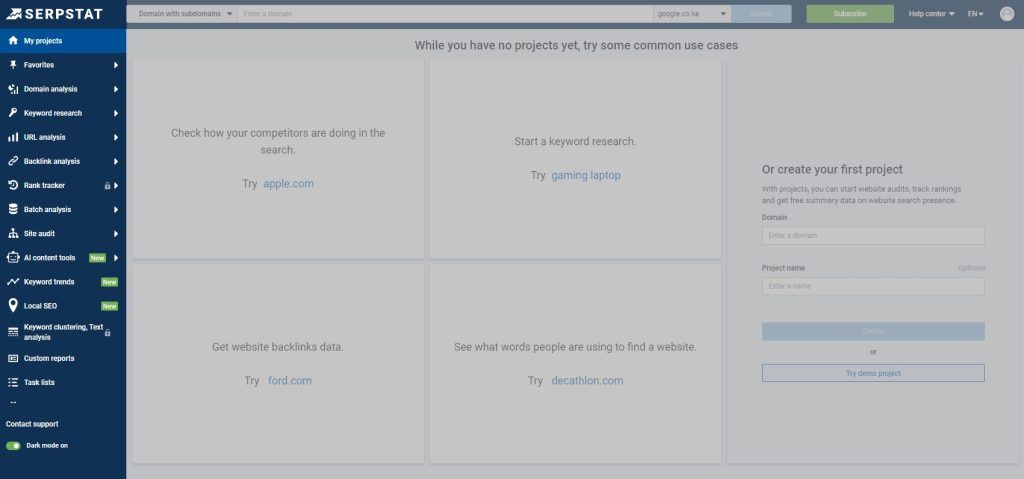
The keyword research function is easy to use regardless of your SEO proficiency. You can brainstorm a few industry-related keywords and use the Keyword Search function to generate relevant keywords that you can use to boost your content’s SEO.
Simply enter the basic keyword related to your industry in the search bar and choose the country database you want to search.
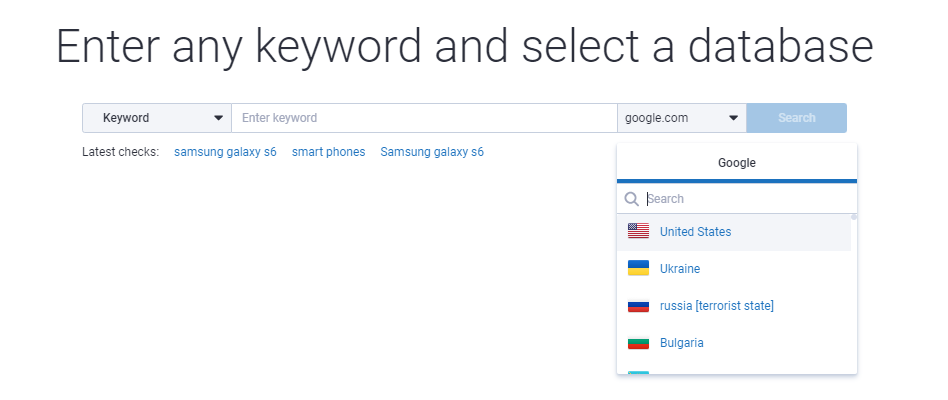
The tool will output thousands of organic keywords to help you find the best-performing ones for your niche. The research includes metrics like keyword difficulty, search volume, Cost Per Click (CPC), Pay Per Click (PPC) competition, results, and social domains. You can also filter the results using a specific combination of metrics so that you only see the relevant information.

Although not unique to Serpstat, the search also shows each keyword’s search engine results page (SERP) features. This way, you can optimize your content with elements like videos and knowledge panels to boost your organic search visibility. It’s also helpful in understanding the type of content that ranks for your target keywords.

Serpstat will also output other related keywords (708 in this case). It’s a terrific feature for adding to your keyword list. Now, you have an immense wealth of keyword information to help you decide your SEO strategy.
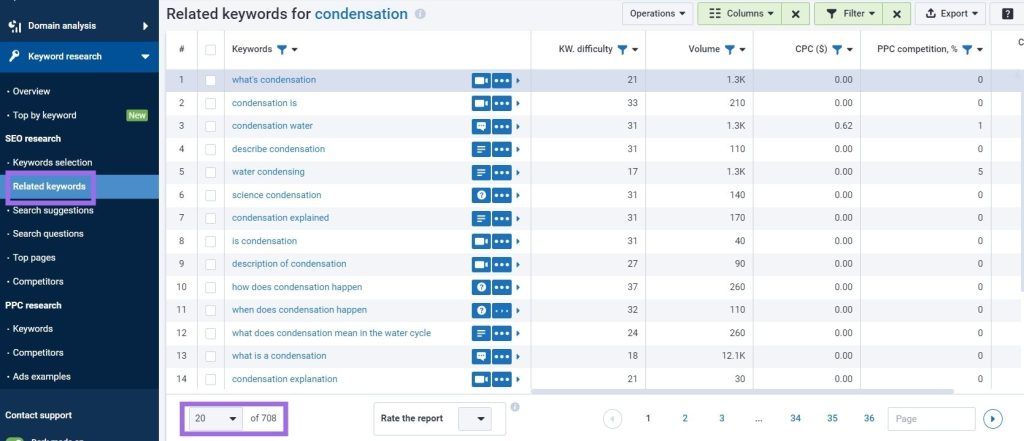
You also get search suggestions (12,500 in this case). Serpstat scrapes Google’s autocomplete feature. You know you’re getting accurate guidance from the horse’s mouth. Ranking on SERPs has never been easier.
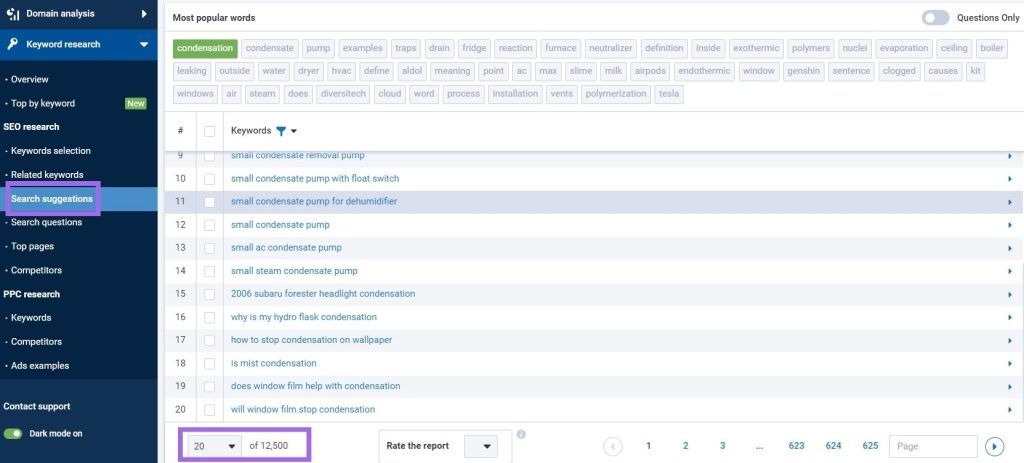
Serpstat also suggests search question keywords (1,911 in this case). These long-tail keywords can be helpful when creating content that answers users’ queries. These questions are also perfect for targeting voice search queries and boosting your voice search optimization.
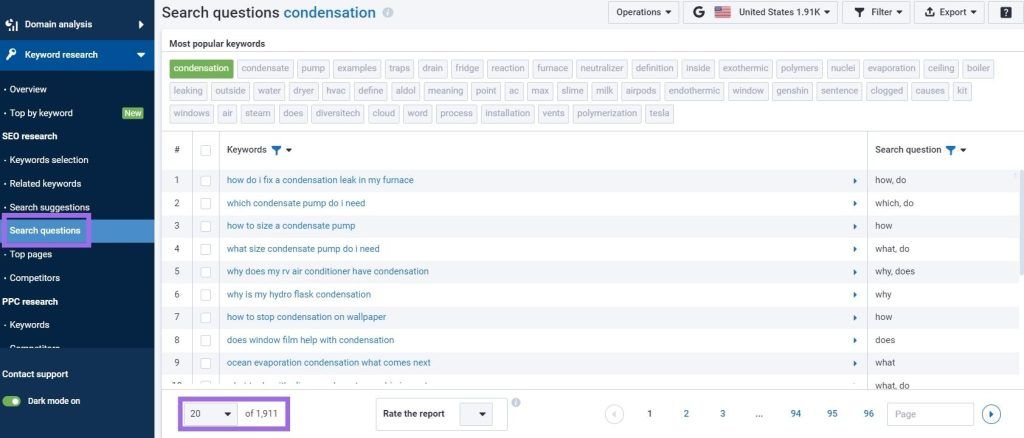
Serpstat also shows the top pages that rank for your keywords (30,000 in this case).
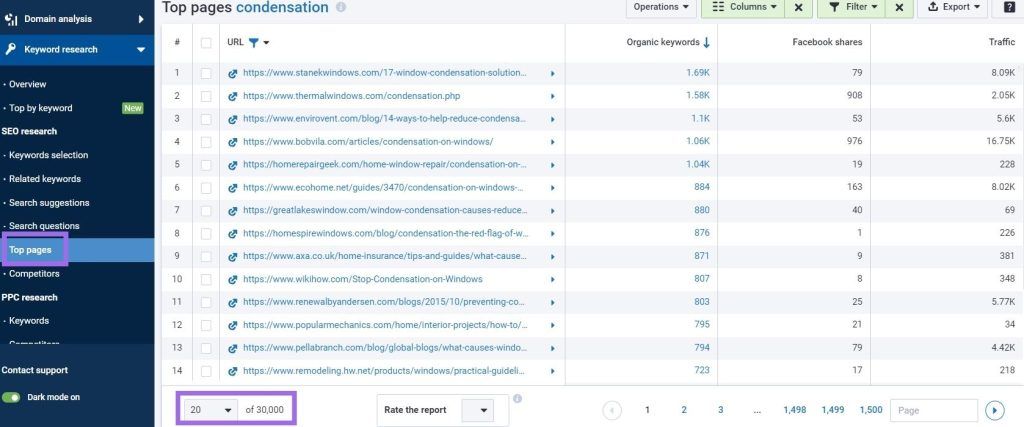
The software also lists your top competitors for your keywords. There are terrific insights here, including overview reports, top pages, referring domains, and anchors for your competitor’s domains. You can even perform site audits for your competitor’s domain to see how you match up.
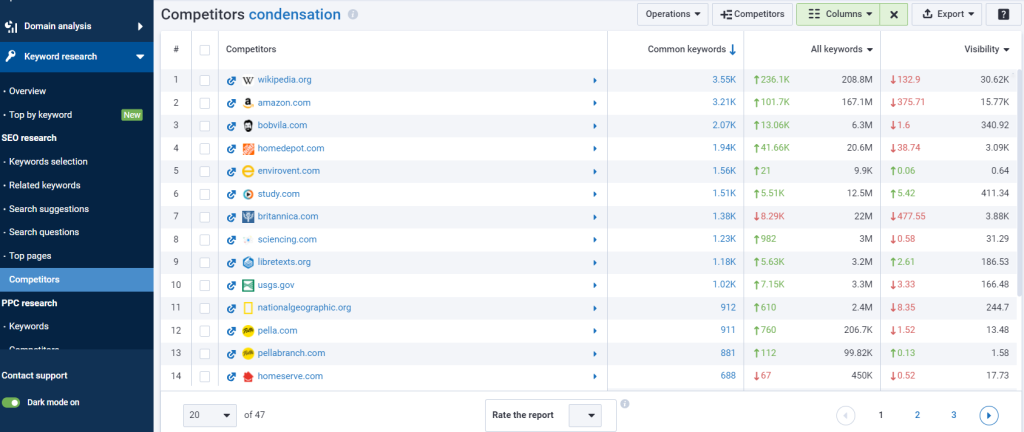
Finally, you don’t have to keep track of all the information manually. Serpstat has a handy overview page that captures all the critical metrics in a visually digestible way. It’s perfect for gaining quick insights and getting a bird’s eye view of what’s happening.

PPC research works much the same way on Serpstat. It’s a terrific feature that helps you gain insights into things like:
- Keywords – Serpstat suggests PPC keywords you can bid on and shows competitors targeting the exact keywords.
- Competitors – Reveals who your competitors are.
- Ad examples – Shows the specific ads your competitors are using.
- Ads landing pages – This shows the landing pages your competitors are using for their PPC ads.
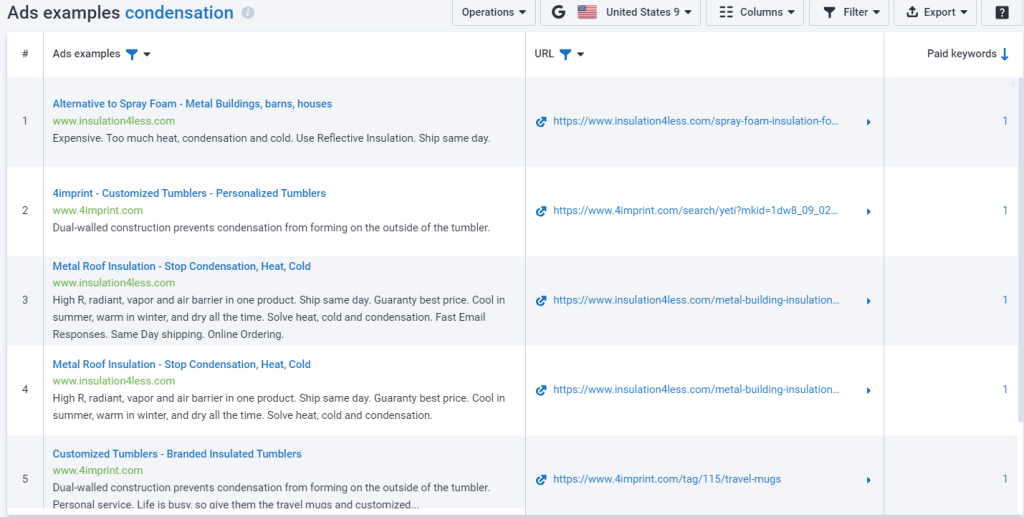
Overall, Serpstat isn’t unique in the kinds of insights it offers with its keyword research feature. Most competitors, including Ahrefs and Semrush, provide similar data. However, Serpstat has an extensive keyword database that rivals most stand-alone keyword research tools, offering immense value with this feature.
Serpstat Review: Site Audit
A website audit is an integral part of SEO. The audit results can help you understand your overall visibility on search engines and identify opportunities for meta tags, keyword targeting, on-page optimization, and other factors that will improve your organic rankings.
Besides, a website audit can help find content gaps and opportunities, identify technical issues, and improve the user experience. Fortunately, you don’t need to hire a specialist or use a dedicated audit tool. Serpstat has a robust Site Audit feature built into its platform.
The site audit is fast, depending on the size of your website. Our example took just a few seconds to complete. It’s a tiny site that we use for tests such as these. However, most websites shouldn’t take more than a few minutes to complete the audit.
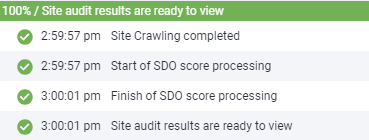
The audit feature is hardly revolutionary since many similar tools have the same functionality. Still, you’ll get all the crucial insights to guarantee your website’s health and stability. You’ll easily be able to spot missing meta tags, identify broken links, and discover search engine indexing problems, among other issues.

The best part is Serpstat conveniently categorizes your issues based on High, Medium, and Low priority. So you don’t have to wonder where to start fixing your website. Simply start with the highest priority and work your way down.
You can view all issues on one page. Everything’s color-coded, such as high-priority issues showing up in red. Alternatively, you can filter by priority.
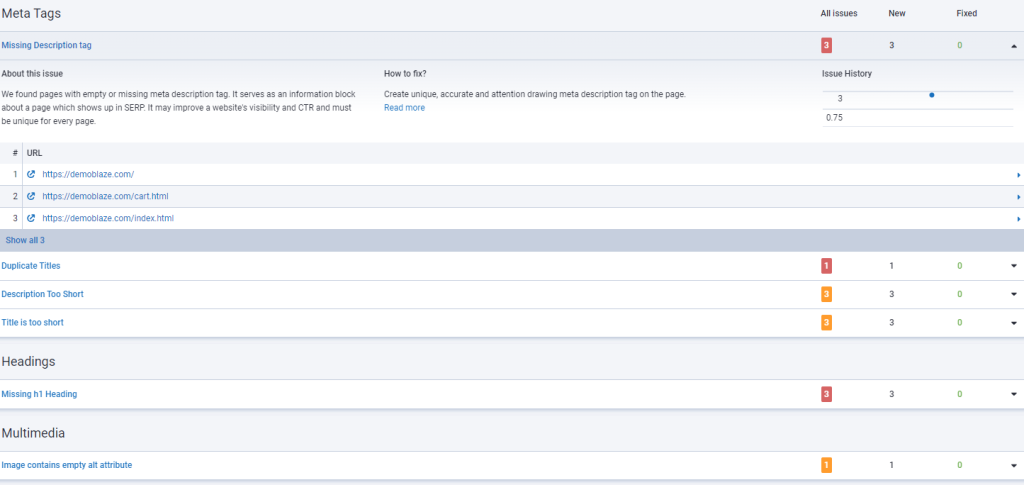
Image indicates issues: red for high-priority, orange for medium, yellow for low, categorized by sections like Meta Tags, Headings, or Multimedia.
The level of detail is also impressive, and Serpstat captures virtually everything from the seemingly trivial to significant issues. For example, you can identify missing headers and duplicate titles, which are major optimization issues. In the same breath, Serpstat lets you know your website isn’t multilingual, which might not be necessary based on your audience.
Don’t worry if you don’t know how to fix these issues. Serpstat provides details explanations for each issue, including actionable suggestions to resolve the problem.

Finally, Serpstat also lets you audit specific pages if you don’t need a complete website audit. You can tell the creators put a lot of thought and expertise into creating this feature. It also makes website audits accessible to anyone, regardless of their technical background or proficiency.
Serpstat Review: Backlink Analysis
Backlinks tell search engines that your website is authoritative and trustworthy. Each high-quality backlink is like a vote of confidence from other authority sites in your space and can help you rank higher on SERPs. A backlink analysis lets you identify link-building opportunities and potentially harmful backlinks. It also lets you compare your backlink profile to your competitors.
Serpstat has an equally impressive built-in backlink checker. So you won’t need a different tool to manage this SEO function. You’ll also get a clear picture of your backlink profile so you can align it with Google’s algorithm.
The domain dashboard gives you a quick overview of your backlink profile, complete with charts and graphs. Here, you can view your Serpstat domain rank score (SDR), which indicates your overall domain authority from 0-100. You can also quickly view the number of referring domains, backlinks, external links, and more.

The dashboard also includes multiple graphs describing linking domain dynamics, linking page dynamics, new and lost backlinks, and SDR distribution. You get a lot of data about the website’s link information here. The best part is you can also do a backlink analysis for your competitors so you can adjust your backlink profile to match the best in the business.
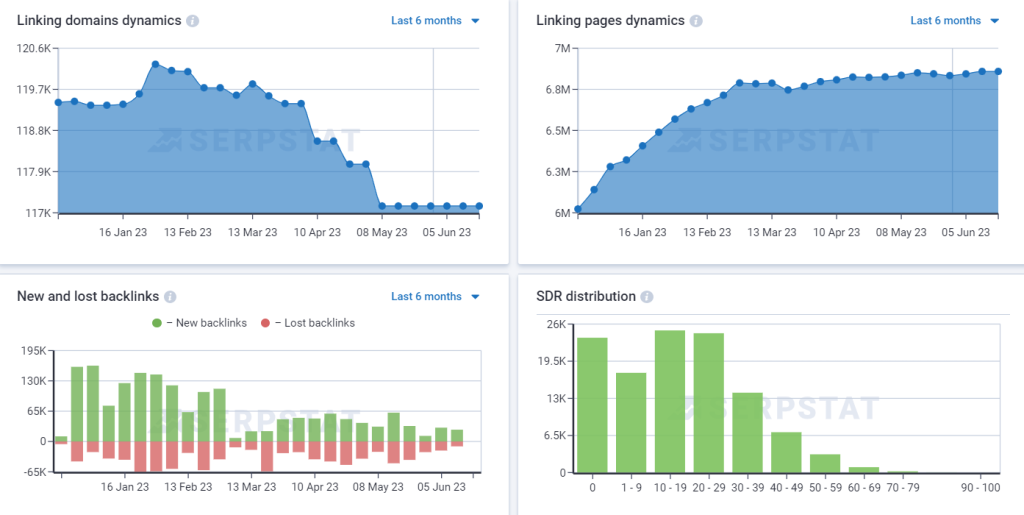
There’s a lot more information available if you want to dig deeper. For example, a top pages report reveals the pages with the most backlinks. It’s a helpful feature for performing backlink analysis on your competitors’ websites. This way, you can find out what they’re doing differently and hopefully adjust your strategy for better results.

Finally, Serpstat also reveals malicious links. You’ll find it incredibly useful since the platform uses the same verification algorithm Google Chrome uses to identify malicious links.
The only downside is that Serpstat doesn’t provide domain rating or domain authority metrics for a competitor’s analysis. The best you can hope for is the “domain rank” metrics we mentioned earlier. It’s not a deal breaker, but competitors like Ahrefs and Semrush offer this feature.
Therefore, Serpstat provides an incomplete picture, especially if you’re looking to compare your backlink profile with your competitors. For example, you won’t get any inspiration for your competitor’s specific high-performing backlinks. Similarly, you won’t be able to perform competitor benchmarking to understand the authority gap between the competitor’s website and your own.
Despite this shortcoming, Serpstat gives you all the insights you need to polish your link profile.
Serpstat Review: Rank Tracking
Your SEO efforts should be anything but blind. Rank tracking provides real-time insights into your strategy’s performance. Additionally, rank tracking helps with competitor analysis, goal setting, and client reporting. Although anyone can use Serpstat’s rank-tracking, people who perform SEO for clients will love this feature.
Simply enter the keywords you want to track into the rank tracker tool. Then, Serpstat will provide detailed insights into how well your pages rank for the specified keywords. There’s also the option of importing your keywords if you don’t want to input them manually.

You can also check how well your competition is doing for the same keywords. Furthermore, you can invite clients to your project so they can monitor the rank-tracking results.
Alternatively, you can set up automatic rank tracking reports, and Serpstat will send the latest data to your clients at the pre-determined date and time. It’s a great way to reduce unnecessary back-and-forth communication since your client has all the information they need.
It’s fair to say that there’s nothing special about Serpstat’s rank tracker. It’s just as good as its competitors. So you are in good hands here.
Serpstat Review: Pricing
Serpstat has four pricing plans, so you’ll find one that meets your requirements. Right off the bat, Serpstat is significantly cheaper than its closest competitors. The cheapest plan costs just $50 monthly if you choose an annual subscription. By comparison, Ahrefs and Semrush charge $99 and $199 for their entry-level plans.

The pricing is based on the data you require. Here’s a quick overview of the pricing plans:
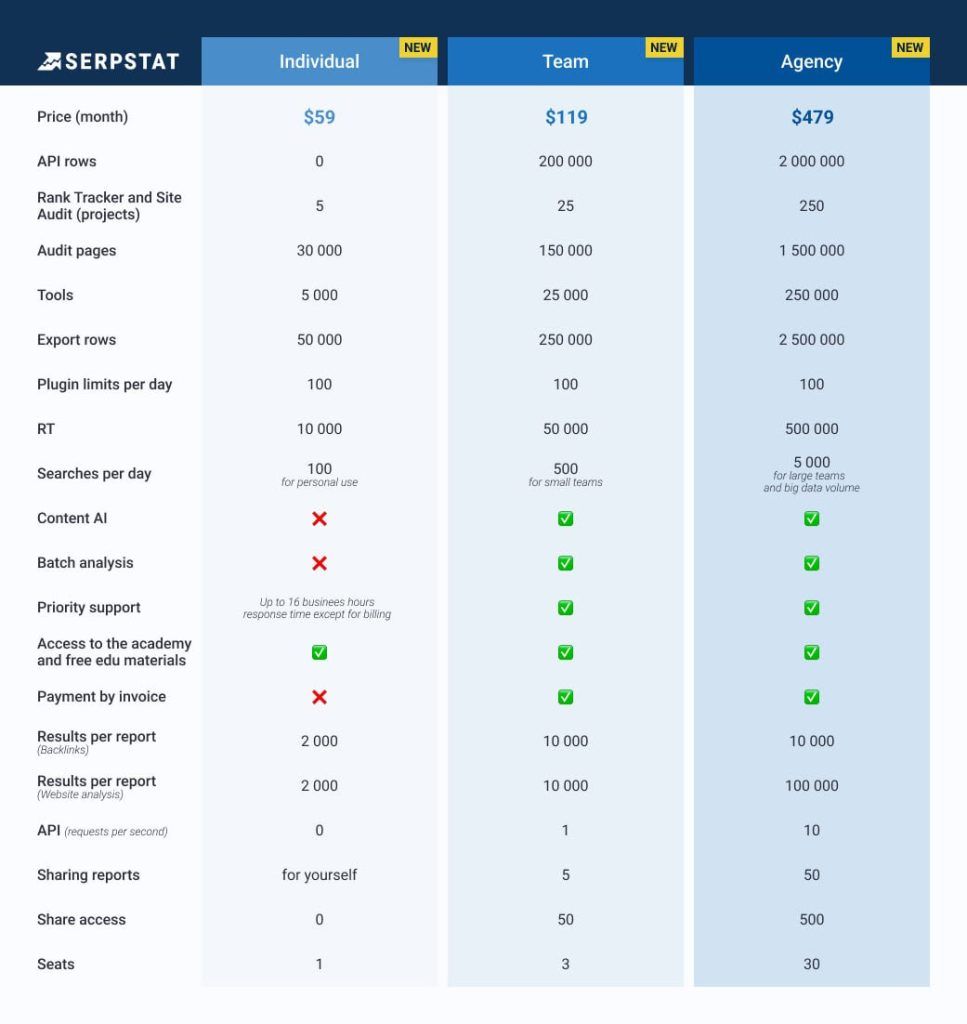
Serpstat also offers terrific value for money with its pricing structure. You can access most of the platform’s features regardless of your plan. The only thing you have to deal with is usage limitations.
Take the Lite plan, for example. Discounting the usage limits, you only miss branded reports and access to the rank-tracking API. Otherwise, you can access all other features in the Standard plan, the next upgrade from Lite. Most individual users don’t need these features anyway.
Now compare that with Ahref’s entry-level plan. You’ll need to upgrade to the next plan to enjoy position history chat, SERP updates, content explorer, batch analysis, and several other missing features. Then, you’ll need to upgrade once more to add more features, which gets expensive. Semrush’s pricing structure works similarly to Ahrefs.
So, if you don’t mind the usage limits, Serpstat is the way to go. It’s cheaper and offers more features for the price.
How Serpstat Compares to the Competition
The SEO software landscape is bloated with numerous options. A full review of Serpstat vs. other SEO tools would require a stand-alone article longer than this one. Regardless, we can provide a quick overview of how Serpstat compares to its closest competitors, Semrsuh, Ahrefs, and Moz.
Serpstat vs. Semrush
Both software has overlapping features, including site auditing, backlinking analysis, and keyword research. However, Serpstat focuses more on core SEO features, while Semrush ventures into additional areas, such as social media analytics and content marketing. In short, you can do more with Semrush than with Serpstat.
This advantage isn’t always a good thing. For example, a novice may not need all of Semrsuh’s features. Serpstat is a competent SEO tool that’s much cheaper than Semrush. However, an SEO expert may find more value in Semrush, provided they’re willing to pay a higher premium for the extra and advanced features.
Semrush also performs better than Serpstat for keyword research. Semrush has a significantly larger keyword and backlinking database than most competitors, including Serpstat. Semrush also offers more advanced keyword research capabilities. Still, only some require this power, especially at such a high price.
Please check out our detailed review of Serpstat vs. Semrush for more details.
Serpstat vs. Ahrefs
Serpstat and Ahrefs are also similar in many ways. But, like Semrush, Ahrefs beats Serpstat on several fronts. For example, Ahrefs offers more in-depth and accurate backlink analysis thanks to its extensive databases. It’s hardly surprising since Ahrefs is the more established SEO platform.
Ahrefs also edges out Serpstat in user interface and ease of use. Serpstat is easy to use and has a clean and straightforward interface. However, Ahrefs seems more polished and visually appealing. Again, we can pin this down to Ahrefs being more established.
Still, Serpstat is a terrific SEO tool. Its attractive pricing plan often makes many users lean towards Serpstat.
Serpstat vs. Moz
Again, Serpstat focuses on core SEO functions. While the software has local SEO capabilities, it doesn’t compare to Moz’s. For example, Moz offers Moz Local, a dedicated local SEO tool.
Still, Sepstart holds its own against Moz’s keyword research, backlink analysis, site auditing, and rank tracking. Still, Sepstart is a terrific alternative for the price unless you need Moz’s advanced local SEO functionality.
Final Thoughts on Serpstat
Is Serpstat the best SEO tool on the market? Hardly. But, it is the best option in its price range. You won’t get anything close to what Serpstat offers for the price. The software manages to strike the perfect balance between affordability and functionality.
Serpstat isn’t just cheaper than its more established competitors. Unless you have very advanced SEO requirements, you won’t miss out anything if you choose Serpstat. The platform also easily replaces your auxiliary tools and delivers on its promises with few complaints.
It’s all about context. If you’re looking for the most advanced SEO toolkit with all the bells and whistles, you’ll be happy with options like Semrush and Ahrefs. However, if you’re looking for a competent SEO tool that covers all your bases without breaking the bank, Serpstat answers the call.
Start your 7-day free trial with Serpstat now.
Frequently Asked Questions
Share This Post
Ada Rivers
Ada Rivers is a senior writer and marketer with a Master’s in Global Marketing. She enjoys helping businesses reach their audience. In her free time, she likes hiking, cooking, and practicing yoga.
Allow cookies
This website uses cookies to enhance the user experience and for essential analytics purposes. By continuing to use the site, you agree to our use of cookies.

![Serpstat vs. Semrush: The Ultimate Comparison [2025]](https://cdn.sanity.io/images/isy356iq/production/be340ea2b4b031a34f4a1ff0ddc940d9edcc9fe1-1200x800.jpg?h=200)
![SpyFu vs. Semrush: The Ultimate Comparison [2025]](https://cdn.sanity.io/images/isy356iq/production/dcb4f43634cf28c0a0689cbc4e5e91d0f0f119bc-1200x800.png?h=200)
